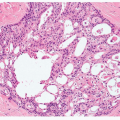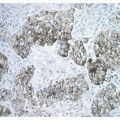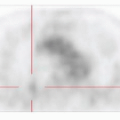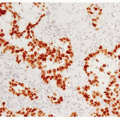Clinicopathologic Overview of Lung Cancer
Philip T. Cagle
TRADITIONAL HISTOLOGIC CELL TYPES
Histologic classification and tumor stage are critical to the diagnosis and treatment of lung cancer and pathologists have a vital role in determining both.1,2,3,4,5 and 6 Although sarcomas, lymphomas, and other nonepithelial malignancies may very rarely arise as primary tumors in the lung, the term “lung cancer” almost always refers to primary carcinoma of the lung and that is how the term is used in this book. Traditionally, lung cancers have been divided into two major categories based on histologic features and cell type that also imply other characteristic features including response to conventional therapy: non-small cell lung carcinoma (NSCLC) and small cell lung carcinoma (SCLC). NSCLCs include three major cell types (adenocarcinoma, squamous cell carcinoma, and large cell carcinoma) that may be additionally divided into subtypes and variants (see Chapters 3,4,5,6,7 and 8). In addition to SCLCs, there are other less common forms of neuroendocrine carcinomas of the lung (see Chapters 9,10,11 and 12). There are also several rare forms of primary lung carcinoma (see Chapters 13,14,15 and 16). Further details on all of the cell types and subtypes of lung cancer, including proposed revisions to classification, are found in the subsequent chapters of this book. In the past, the term “bronchogenic carcinoma” was used interchangeably with lung cancer or lung carcinoma, but, in recognition of the peripheral nature of many lung cancers and the changing concepts of lung cancer origins, we will not use this term.1,2,3,4,5 and 6
Stay updated, free articles. Join our Telegram channel

Full access? Get Clinical Tree








